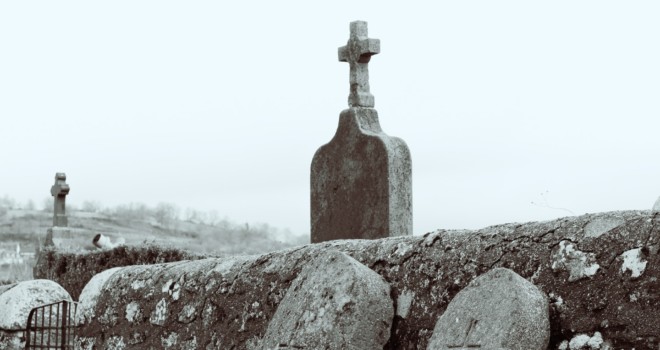While study is important for growth in one’s faith life, I know full well living it out is what matters. This is a hard lesson for me to remember, as evidenced by the pile of academic journal articles on the nightstand next to my bed. The preponderance are on St. Edith Stein and her pioneering concept of “the feminine genius.” So many brilliant theologians, philosophers and writers have explored her work in great beauty and depth, such as St. John Paul II who canonized her in 1998, that I could spend a lifetime indulging in all there is to read.
The Pope defines where the source of this feminine genius is found in his apostolic letter Mulieris Dignitatem: “The moral and spiritual strength of a woman is joined to her awareness that God entrusts the human being to her in a special way.”
I’ve always felt St. Edith Stein was challenging me through reading to live the inspiration I find in her, and I’ve prayed to be drawn more deeply into the flow of divine life as she allowed herself to be. But, as we all know, the admonition “be careful what you wish for” holds especially true in the life of faith. In praying for greater humility, we grow by suffering humiliation. In praying for deeper union with God, we are tested by persevering through dryness. In praying to be stronger in our faith, we may be faced with more doubts. In praying to understand more fully what it means to live out the feminine genius, I became sexton of our Catholic cemetery shortly before the outbreak of COVID-19.
Even before the pandemic, the learning curve was steep. What did I know about burying the dead? Nothing! And because of that, there have been more times than I can count where I’ve experienced what I’ve come to call “not-enoughness” in this role. I think of this “not-enoughness” as akin to what the disciples experienced before the multiplication of the loaves and fishes. We see what is required of the situation, what we have to offer, and how tremendous a shortfall there appears to be. In moments like that, and there are so many of them for me, I offer my “not-enoughness” in hopes that the Lord will turn it into an abundance. It is St. Edith’s Stein’s guidance that has helped me to find this abundance in others.
I endure my “not-enoughness” in a number of ways, most especially in my inexperience and having less physical strength in comparison to my almost exclusively male counterparts. Because of this, the last eight months for me have seemed like a well designed field experience in “integral gender complementarity,” a subject deeply explored in my stack of articles. Sr. Prudence Allen has written extensively on it and lists the characteristics of the complementarity between men and women—meaning how God created the sexes to exist together—as equal dignity, significant difference, synergetic relation, and intergenerational fruitfulness.
These significant differences can be intimidating, but it is in recognizing the dignity of those who help me and receiving them as gifts, rather than focusing on the frustration of not being able to accomplish things on my own, that I’ve been able to learn quickly. This aspect of the feminine genius, the receptivity to the other person as gift and an awareness of how persons are entrusted to each other, is not the same as passivity. It entails a choice on the part of one exercising receptivity.
While woman may be more aware of this receptivity because her body is uniquely created to conceive, carry and nurture life within herself as St. Edith Stein developed in her work, I’ve seen that same trait, mirrored in the men that have so patiently taught me from scratch what I need to know. Receptivity isn’t exclusively the domain of women in the spiritual life: it is the relation in which all mankind, both man and woman, stands before God. We are created to participate in divine life through receiving God’s love.
The concept of “fruitfulness” for me as a wife and mother has always centered on receiving my children as gifts, and helping them grow. What could fruitfulness possibly mean in a cemetery? I seek it out even if I’m not always sure what it means. For example, do I know how to use the backhoe to dig? Not well, not yet; but my coworker is teaching me the basics of heavy equipment has been an occasion of growth for me, and often laughter. This hasn’t produced anything outwardly measurable yet, but rather something hidden: roots. Their patience with me strengthens my trust in them, and watching me learn builds their faith in me. This is where hope for true fruitfulness and real results finds its foundation.
In April, images from New York of refrigerated trucks serving as mobile morgues struck close to home. We all faced the question of “What if it happens here? What if it happens to us?” in our respective communities, our respective professions. The question I was asked is “Ann, what would you do with all those bodies?” The only answer I have is “I’ll figure it out, if it comes to that. We’ll figure it out together.” While we, to date, have not suffered such magnitude of death in my community, the cemetery has changed because of COVID-19. In certain ways, the cemetery is more alive than ever. While some visiting are looking for open green spaces in which to relax, many who live far away are taking this time to make long drives to their loved ones’ graves. I am among those who find comfort while we endure a new hunger for the sacraments by simply spending time on our consecrated grounds.
At the heart of our grounds is a chapel where I most acutely experience my “not-enoughness,” and frustration in how little I’m able to affect change in it. The structure is two hulking slabs of concrete on its north and south sides resting against each other, forming a peak. Its triangular east and west exterior walls are rotted shaker shingles. The only beauty in the chapel comes from two stained glass windows. The south facing window portrays the Holy Spirit in the form of a dove descending through a celestial blue background blending to green, while the north window looks ablaze in red, orange and yellow, and features a gold chalice with a purple cross rising out of it. A large, rough crucifix creates a silhouette of our Lord hanging on the cross in the light streaming through the window’s flames, and a large marble altar stands under it. The interior is in such disrepair and so full of rodents we are unable to open it for prayer.
I, like so many, faced Holy Week 2020 with a new depth of sorrow at not being able to celebrate the Triduum in my parish. Despite this, I knew on Good Friday I was one of the few lay women in the United States that had access to a chapel to pray in at the hour of our Lord’s death. Kneeling, I prayed the sorrowful mysteries before the rough crucifix seemingly engulfed in love streaming through the Eucharist. In the silence of that afternoon’s prayer, the chapel’s “not-enoughness” became an abundance of grace and peace.
I pray daily with renewed faith that the chapel will someday serve as a prayer filled place where all who visit our cemetery experience the same providential love as I did on Good Friday. I pray, too, that St. Edith Stein continues to intercede for me as I struggle to learn all I need to best serve those entrusted to me in their suffering at the loss of their loved ones, and at their own deaths. And I pray for us all, that we face the suffering and death brought by this pandemic steeped in the assurance of God’s merciful and tender love for each one of us poured out in Christ’s redeeming sacrifice on the cross. Amen.
✠












